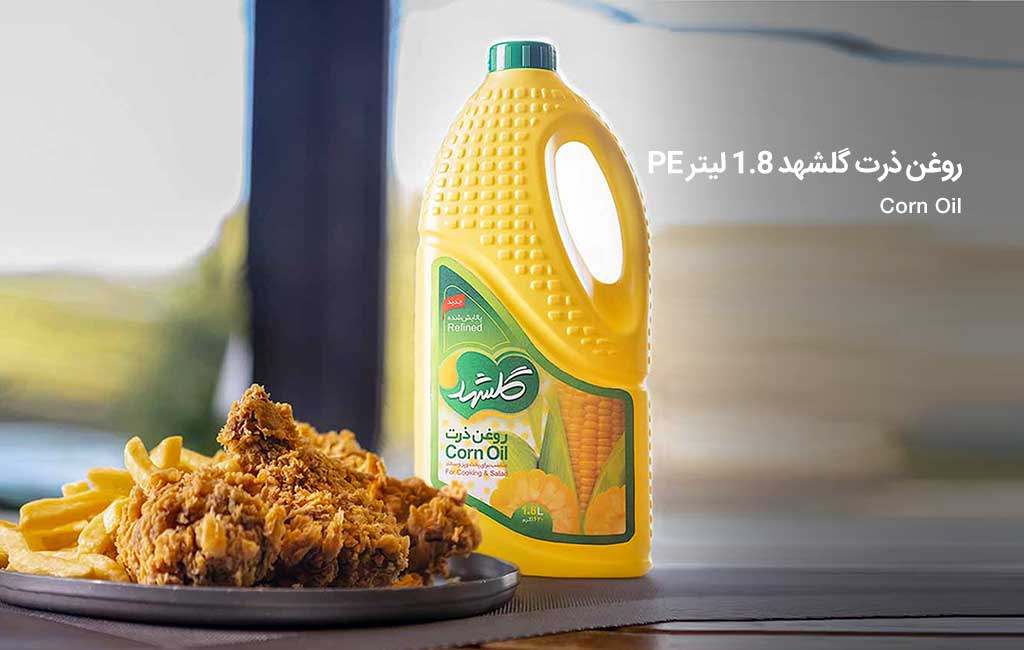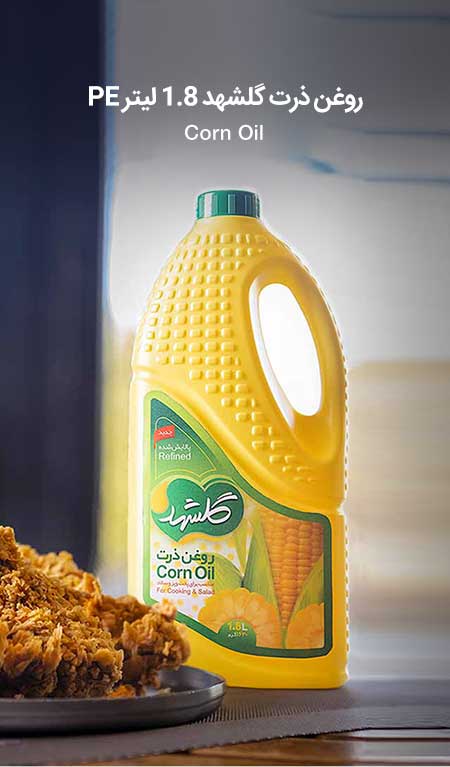Corn oil is made from corn germ. Like many edible grains, corn is primarily cultivated for the purpose of separating the starch and protein contained in it, and corn oil is a byproduct of companies that produce starch powder. Oil is about 1.3-5.7% of the weight of corn kernels. About 83% of the oil is in the bud, 15% in the endosperm (kernel), 1.3% in the shell and 0.7% in the ridge of the cap. Corn germ is the part rich in corn oil, which is separated from the kernel by dry or wet milling before oil extraction. Then, the dried seeds are put through spiral or spiral presses at medium temperature and high pressure to extract the oil from the bud. This crude oil must go through stages such as degumming, alkaline purification, decolorization, winterization and deodorization. In the refining process, free fatty acids, phospholipids and unwanted harmful substances and colored substances are removed from the crude oil and valuable properties including pleasant taste and resistance to smoking, color change and flavoring are given to the oil. Golshad’s useful oil is offered in two sizes: 800 grams (900 ml) and 1620 grams (1.8 liters).
User
Food, pharmaceutical and industrial uses, including non-food uses of corn oil; Medicinal uses as a carrier of vitamin E and other medicinal compounds in capsules, making chemicals and insecticides, producing lecithin, preparing paints and varnishes, insulating compounds, covering surfaces, soap making, textiles, biodiesel and…
Properties
- Light smell
- Anisidine: Max 6
- optimal color and transparency
- High smoke point (232 degrees Celsius)
- Acidity (oleic acid weight percentage): maximum 0.1
- Non-saponifiable matter (weight percentage): maximum 1.5
- Suitable for gentle roasting and cooking food
- Stability by Rancimet method at 110 degrees Celsius for about 9 hours
- Peroxide number (milliequivalent grams of oxygen per kilogram of oil): maximum 5
Advantages
- High stability
- Lowering LDL cholesterol
- High natural antioxidant
- Desirable effects on skin and hair
- High quality in terms of nutritional value
- Not using solvent in degreasing
- Very important source of vitamin E and tocopherol
- Reducing the risk of heart diseases
- Corn oil rich in linoleic, omega-3 and omega-6 fatty acids
- Effect on more absorption of vitamin D and strengthening and strength of bones
- delay in its oxidation action against light due to the absence of chlorophyll
- Maintaining vision health and preventing cataract progression due to corn oil lutein
- Reducing the activity of free radicals in the body by lutein in corn oil
- The richest sources of phytosterols (ppm 8300-25500) and tocopherol (ppm 1130-1830)
- Positive effect of linoleic acid (Omega 6) in corn oil on pancreas function and regulation of blood sugar level
Maintenance Conditions
- Keep in a dry, cool, clean environment and away from direct sunlight.
Product durability
- The recommended usage period is 6 months after production.
| Refined Corn Germ Oil |
| Apparent state (at 20 and 25 degrees Celsius) |
Clear liquid |
| Moisture and volatile matter at 105 degrees Celsius (% by weight) |
Maximum 0.2 |
| Taste |
Free from harsh and unnatural taste |
| smell |
Free from any smell |
| Relative density at 20°C |
0.197 – 0.925 |
| Refractive index at 40°C |
1.465 – 1.648 |
| anisidine number |
Maximum 6 |
| Insoluble impurity (mg/L) |
Maximum 500 |
| Soap residue (% by weight) |
Maximum 0.05 |
| Acidity (% by weight of oleic acid) |
Maximum 0.1 |
| Peroxide number (milliequivalents of oxygen per kilogram of oil) |
Maximum 5 |
| Soap number (mg of potassium per gram of oil) |
187 – 195 |
| Ideal number (Widges method) |
103 – 135 |
| Rensmith resistance at 110 degrees Celsius |
Minimum 9 hours |
| Crude Corn Germ Oil |
| Apparent state (at 20 and 25 degrees Celsius) |
Clear liquid |
| Moisture and volatile matter at 105 degrees Celsius (% by weight) |
Maximum 0.2 |
| Taste |
Free from harsh and unnatural taste |
| smell |
Free from any smell |
| Relative density at 20°C |
0.197 – 0.925 |
| Refractive index at 40°C |
1.465 – 1.648 |
| anisidine number |
Maximum 6 |
| Hexane residue |
Maximum 290 |
| Soap residue (% by weight) |
Maximum 0.05 |
| Acidity (% by weight of oleic acid) |
Maximum 3.5 |
| Peroxide number (milliequivalents of oxygen per kilogram of oil) |
Maximum 20 |
| Soap number (mg of potassium per gram of oil) |
187 – 195 |
| Ideal number (Widges method) |
103 – 135 |


